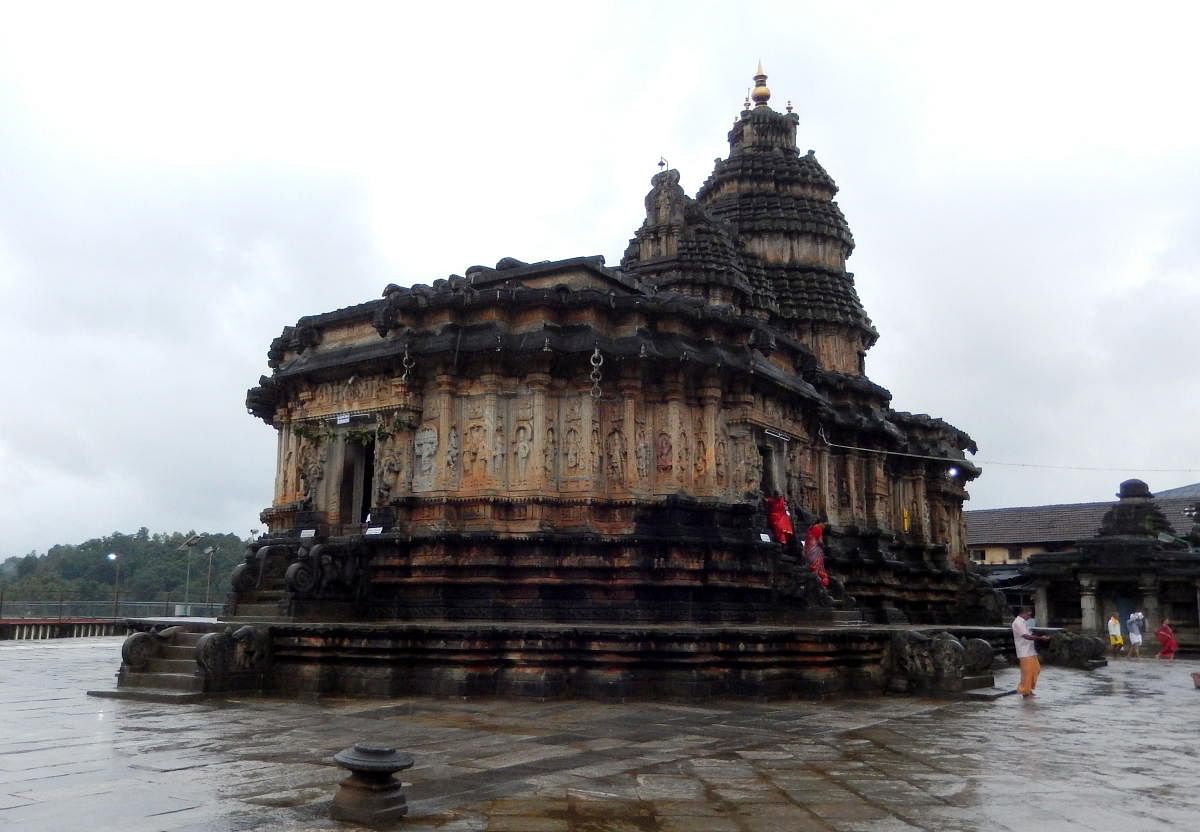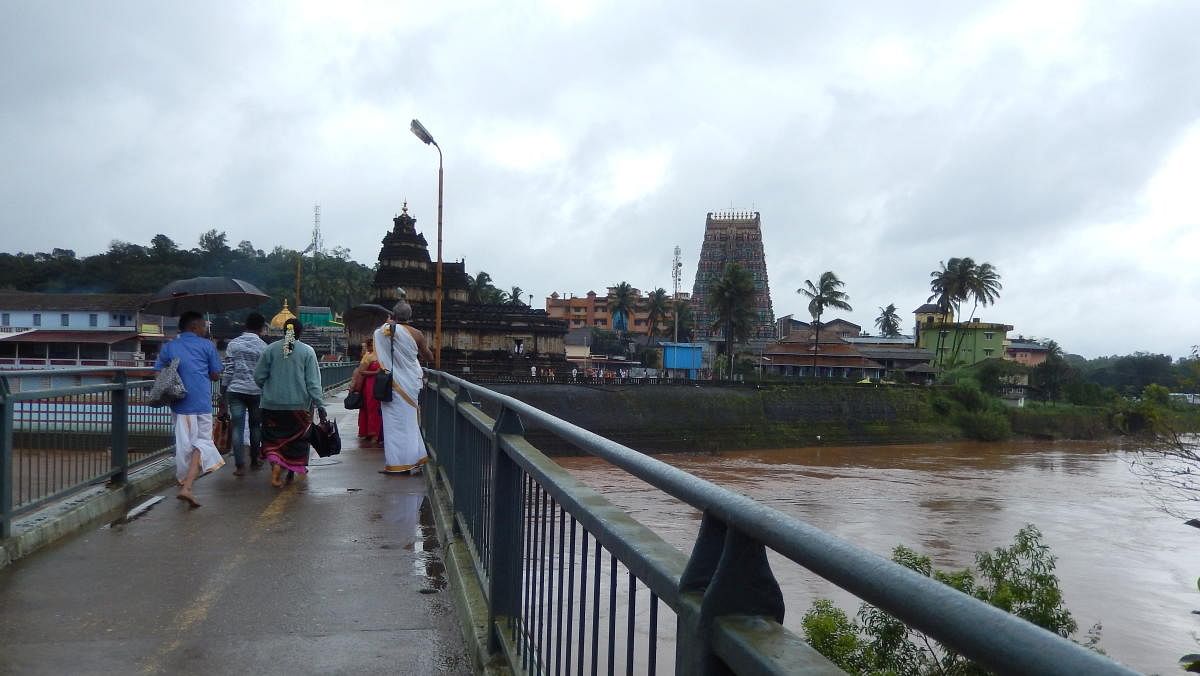
It was a two-day pilgrimage amid monsoon rains to Chikkamagaluru’s Horanadu and Sringeri. About 250 km from Mysuru, Horanadu has a beautiful setting of forests and green lands of the Western Ghats on the banks of River Bhadra.
Next, we took the road to the sacred town of Sringeri, about 45 km off. Nestled in a picturesque spot, Sringeri, too, is surrounded by the charming hill, Sringagiri, on the banks of Tunga.
Our first visit was to the temple of Torana Ganapathi, whose darshan, we were told, is a must before proceeding to other temples. Sri Sharada Temple is a structure in Dravidian style, consisting of a garbhagriha, a sukhanasi, a navaranga, and a praakara or enclosure.
Initially, the idol of Sharada, installed by Adi Shankara in the ancient shrine, was of sandalwood. Subsequently, a temple was built in the Kerala style, with timber and tiled roof. The sandalwood idol was substituted with the present golden idol. The mahamantapam has huge granite pillars exquisitely carved with dwarapalakas, Durga, Rajarajeshwari, and other deities. The golden doors at the entrance, installed on the occasion of the golden jubilee of Vardanthi of Sri Bharathi Thirtha Mahaswami, is an excellent piece of art with figures of Ashta Lakshmi on them.
Vidyaranya Temple, adjacent to Sharada Temple, stands out with its unique Dravida and Hoysala-style ornamentation. The temple, attributed to 1338 AD, is built on a raised terrace. The outer walls have over 100 figures, rows of animals and friezes of puranic stories representing Shiva Purana.
One panel depicts Shankaracharya, with a book in his hand, teaching his four disciples.
The stages of the tower, from bottom to top, are called sapthalokas or seven worlds. The navaranga is a grand hall that has a dozen sculpted granite pillars with lions and riders on two faces. Each lion has a rolling stone in its mouth. However, the mouths have been covered now to prevent damage.
Each pillar has a zodiac sign sculpted on it. They are arranged such that the rays of the sun fall on that particular zodiac sign in that solar month. Each pillar, likewise, has carved on it the particular planet or planets ruling over the particular rashi or zodiac sign represented by it, while the sun, being the lord of all the rashis, is sculpted on the top panel of all the pillars.
The linga in the sanctum sanctorum, constructed over the samadhi of Guru Vidyathirtha, is called Vidyashankara, whose disciple was Vidyaranya, who was instrumental in establishing the Vijayanagar kingdom. The consecration of the temple took place after 1556 AD.
There is a beautiful bridge over the Tunga providing easy access to the Narasimha Vana, where the head of the peetha resides.
On the way back to Mysuru, we took a break at Kelahaadi, a small village, where the Akhila Bharatha Seva Abhiyan of Swami Dayananda Saraswati of Rishikesh is running one of the 120 centres across India to rehabilitate children, providing them with free education, accommodation, and food. The Kelahaadi hostel has 52 boys, mostly from Meghalaya.
A couple, Asha and Abbas, is in charge of it since 2008, when it was started.
“Our effort is to bring the poor students to the mainstream. Boys and girls have separate hostels.
So far, nine-10 batches have come out from this hostel, and many of them are doing well today,” says Swamini Svathmananda Saraswathi, who is the coordinator of five hostels in Karnataka.
After the exhilarating two-day road trip, blessed by the two goddesses and the two pontiffs of the Advaita Peetha, we were back in Mysuru by late night.
